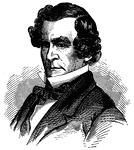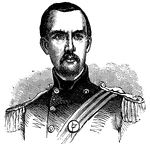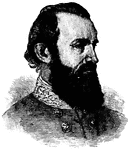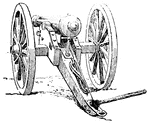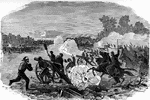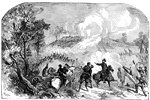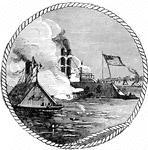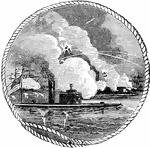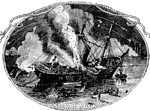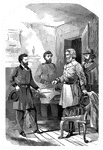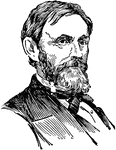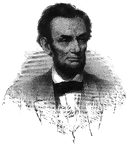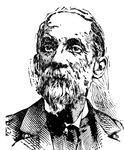
General Joseph Wheeler
(1836-1936) American Major-General active in Civil War and the Spanish-American War. Held a seat in…
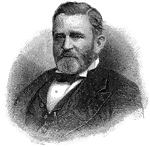
General Ulysses S. Grant
(1822-1885) Eighteenth president of the Unites States (1869-1876) and Civil War general for the Union.
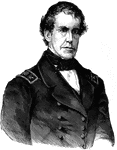
Charles Wilkes
(1798-1877) American Naval officer and explorer who brought Great Britain on the Confederate side of…
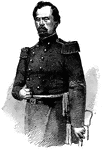
Irvin McDowell
(1818-1885) Soldier who served in the Mexican War and lead the Union Army in the Civil War at Bull Run
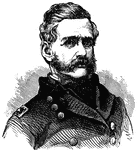
E. O. C. Ord
(1818-1883) Soldier that served in the Seminole war then led Union troop in the Civil War
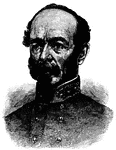
Joseph E. Johnston
(1807-1891) Soldier that fought in the Mexican War and in the Confederate side of the Civil War.
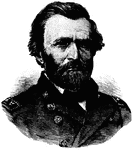
General Ulysses S. Grant
(1822-1885) Eighteenth president of the Unites States1869-1876 and Civil War general for the Union.

Philip H. Sheridan
(1831-1888) Union soldier who forced out the Confederates from the Shenandoah Valley
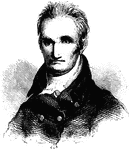
William Polk
(1816-1898) Military and Political leader of Texas. He raised Confederate troops in the West

Jackson's Men Rush into the Federal Camp
Thomas J. (Stonewall) Jackson's men rush into the Federal camp at Chancellorsville

Cavalier
Cavalier was a name first used by Parliamentarians as a term of abuse for the wealthier male Royalist…
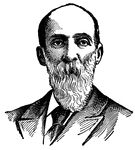
General Joseph Wheeler
(1836-1936) American Major-General active in Civil War and the Spanish-American War. Held a seat in…
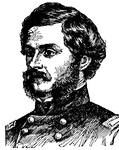
Theodore Winthrop
(1828-1861) American military officer. Killed during the Civil War while at the head of an assaulting…

Bombardment of Fort Sumter, April 12, 1861
Confederate forces bombarding Fort Sumter on April 12, 1861

Duryea's Zouaves at Big Bethel Brining Off Grebel's Body
Group of soldiers escorting a corpse on a wagon.

Union Prisoners Confined at the Confederate Prison at Andersonville
Union soldiers being held at Andersonville, a Confederate prison.
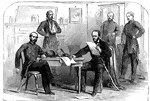
Surrender of General Johnson to General Sherman
Genereal Johnson surrendering to Union General Sherman.
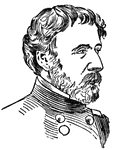
John Charles Fremont
(1813-1890) Fremont was an explorer and general. He was promoted to major-general during the Civil War.…

The Sixth regiment
Thousands of patriotic citizens filled every available space in the big railroad station in Jersey City…

Landing of Captain Bailey and Lieutenant Perkins in New Orleans
Captain Bailey, bearing a flag of truce, put off in a boat, accompanied by Lieutenant George H. Perkins,…

Advance of the Federal Army towards Yorktown
When General McClellan reached Locst Hill, on april 2nd, 1862, he found fifty-eight thousand men and…

Drilling Troops
The influx of Northern regiments of troops into Washington during the early days of the war rendered…

Battle of Pittsburg Landing
Recapture of artillery by the First Ohio and other regiments under General Rousseau, April 7, 1862.…
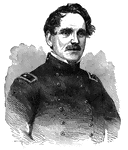
General James Shields
In 1861, he was appointed a brigadier general of volunteers and assigned to the command of General Lander's…
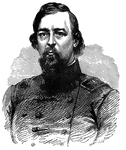
Colonel Everett Peabody
Upon his joining the forces under General Grant the command of a brigade under General Prentiss was…

General John M. Schoefield
He took part in the battles of Resaca, Dallas, Kenesaw Mountain and Atlanta. For his services at the…

Interior View of Fort Beauregard
Fort Beauregard, at Bay Point, on the point opposite Fort Walker, was built of sand and palmetto logs…

Discovery of a Confederate Battery at Messech's Point
The activity of the Confederates on the Potomac and the confluent rivers was almost incredible. In one…
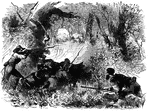
Scouting Party
Scouting party of the ninth Indian volunteers, or, as they were called, "The tigers of the bloody ninth."

Fort Hatteras
View of the camp of the twentieth Indiana Regiment; also of Fort Hatteras and the anchorage at Hatteras…

Evacuation of Corinth
Evacuation of Corinth, Mississippi- Confederate fortifications, from the northern angle, looking south-…

Bivouac of the Eleventh Indiana Volunteers
Our special artist, who accompanied General McClellan's command, sketched the gallant Eleventh Indiana…

Evacuation of Corinth
Evacuation of Corinth, Mississippi- burning of stations, warehouses and supplies- entry of Federal Troops.…

The Great Naval Battle on the Mississippi
First day's bombardment, Federal Schooners off Forts Jackson and St. Philip, commanding the passage…

Arrival of General McClellan
April 5, 1862. The General is arriving to take personal command of the Federal Army in its advance on…
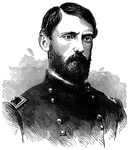
General John Fulton Reynolds
Was in command of the First Corps of the Army at the Potomac and was engaged at Fredericksburg and at…
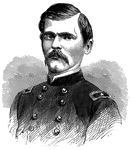
General George C. Strong
At the assault on Fort Wagner, July 18, he was mortally wounded. He was at once removed to New York…
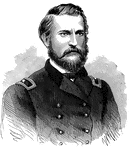
General Godfrey Weitzel
He joined the Western Louisiana campaign, and from May till September, 1864, was chief engineer of the…
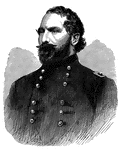
General John Sedgewick
While directing the placing of some pieces of artillery in position in front of Spottslyvania Courthouse…

Fort Pulaski
Fort Pulaski, on Cockspur Island at the entrance to the Savannah River, Georgia, was built by the United…
